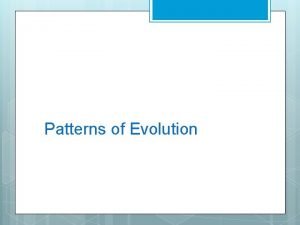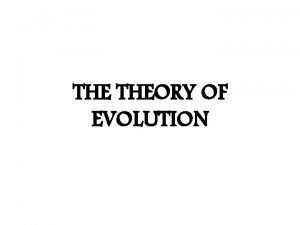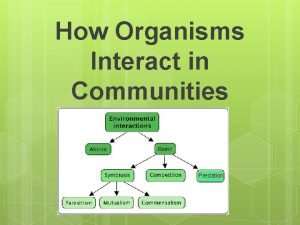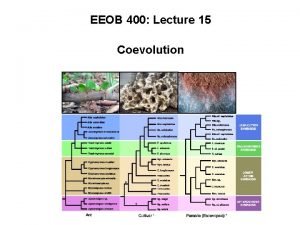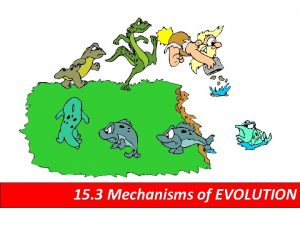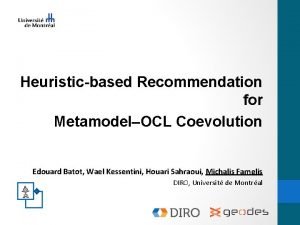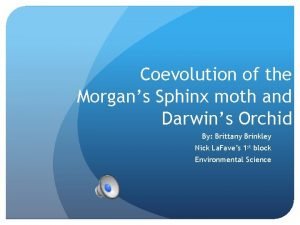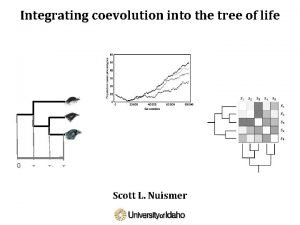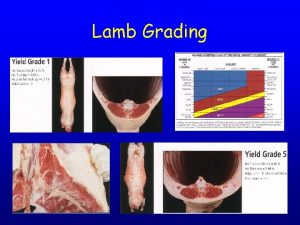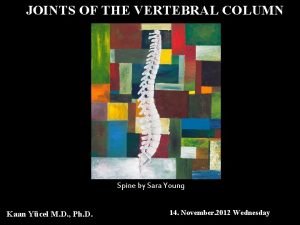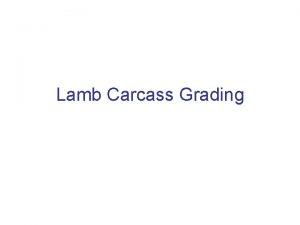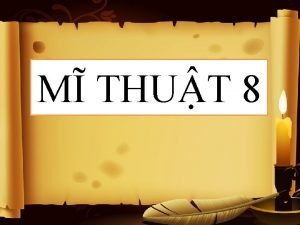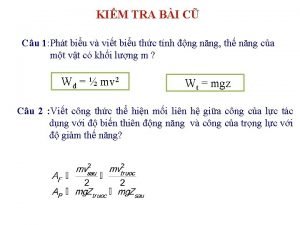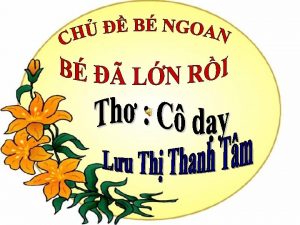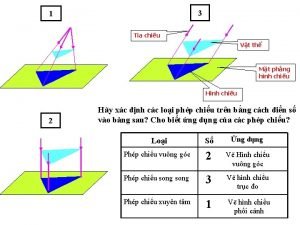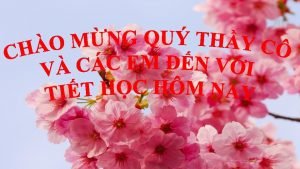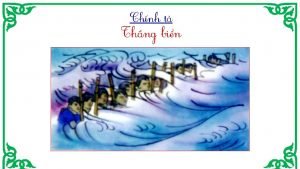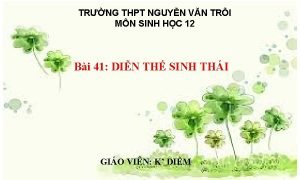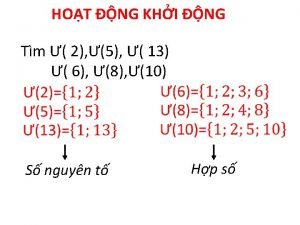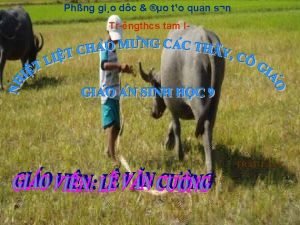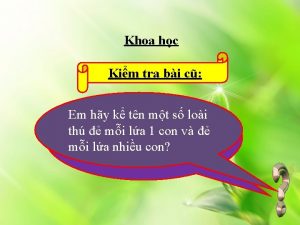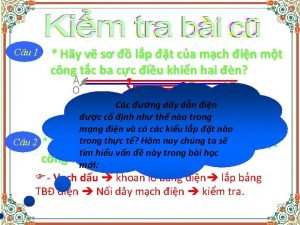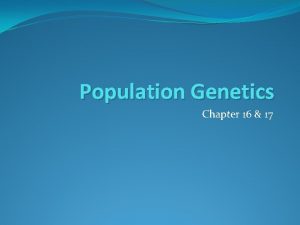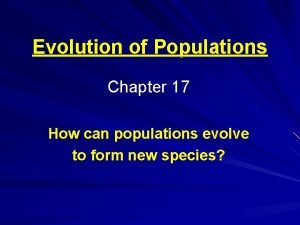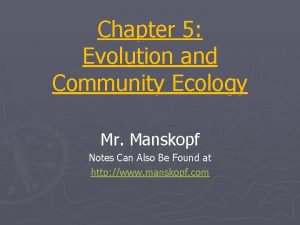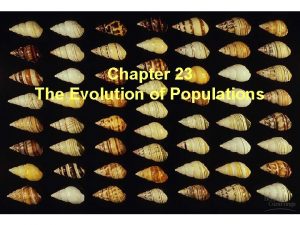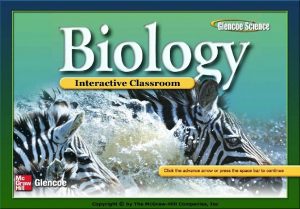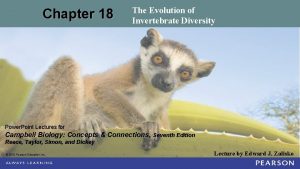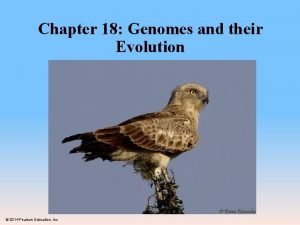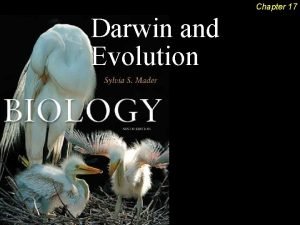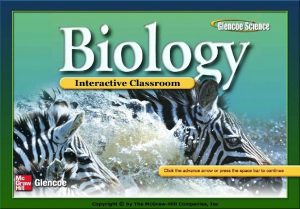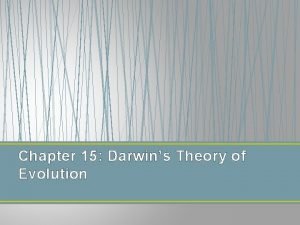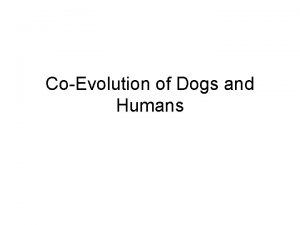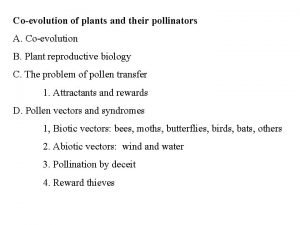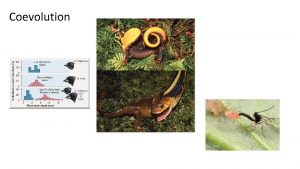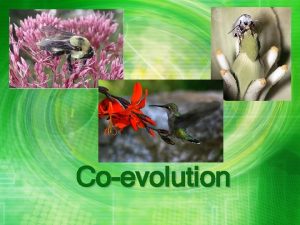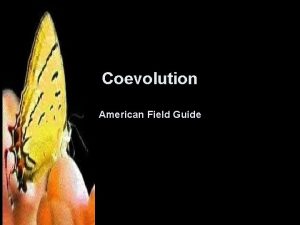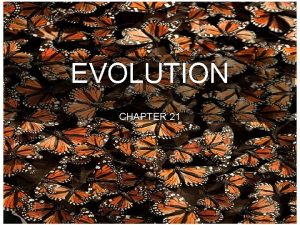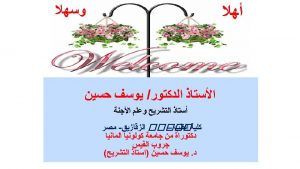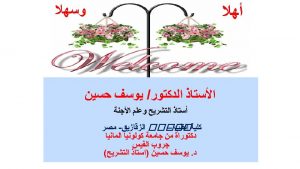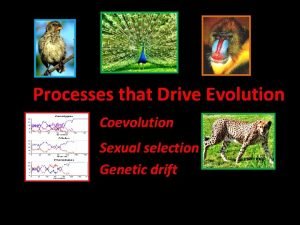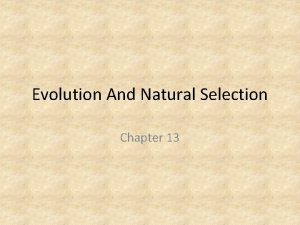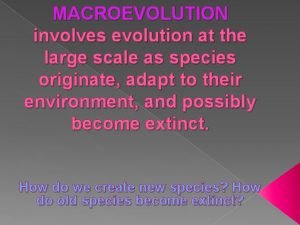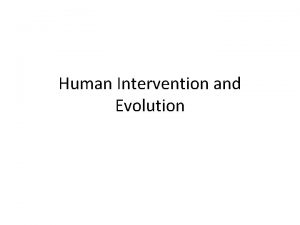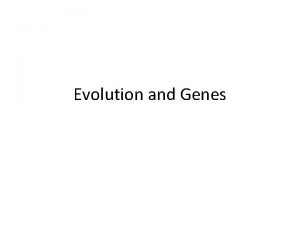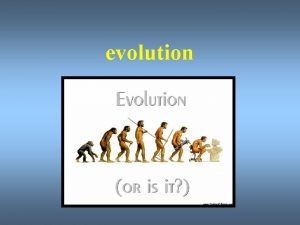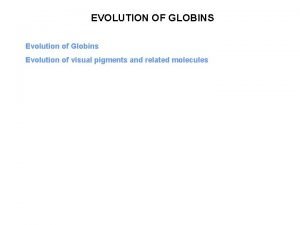Chapter 10 CoEvolution Coevolution involves the joint evolution


















































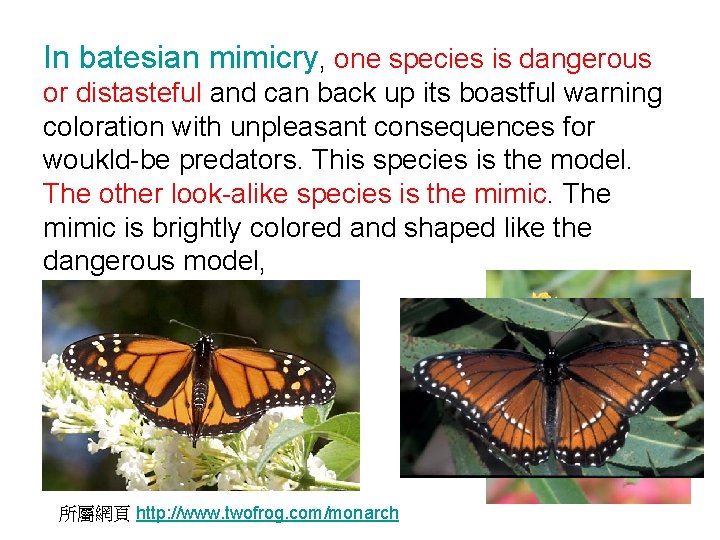
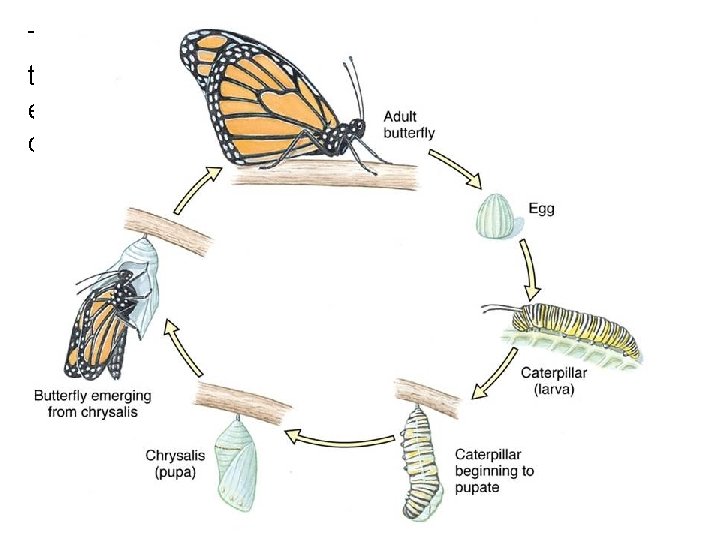
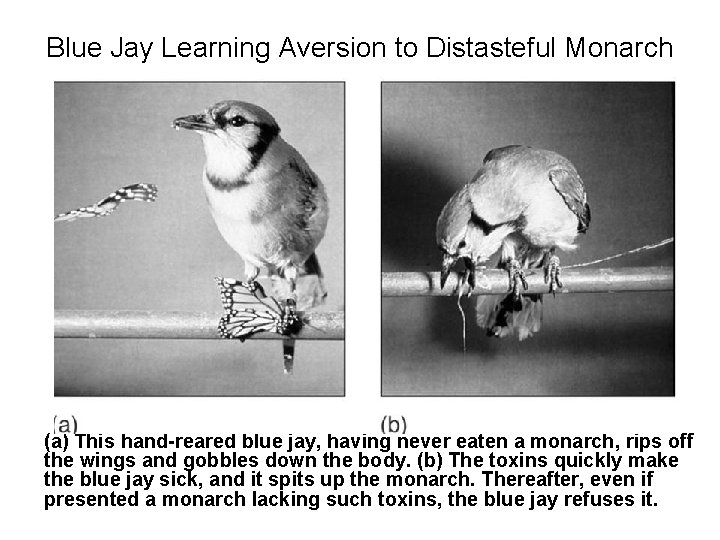
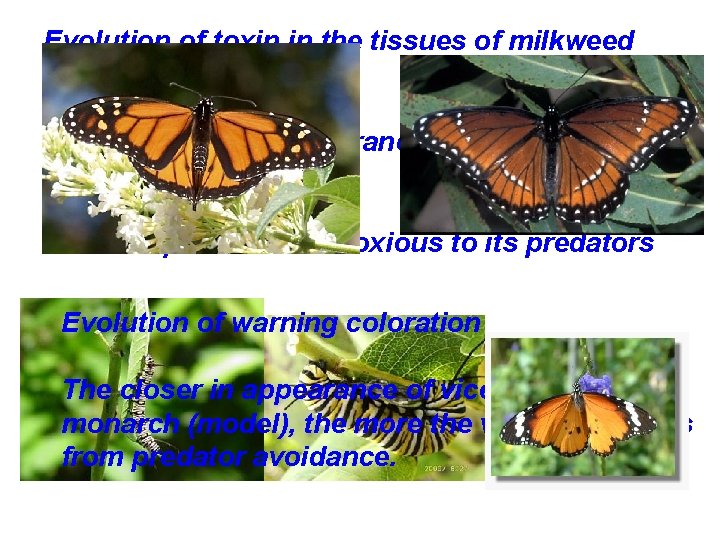
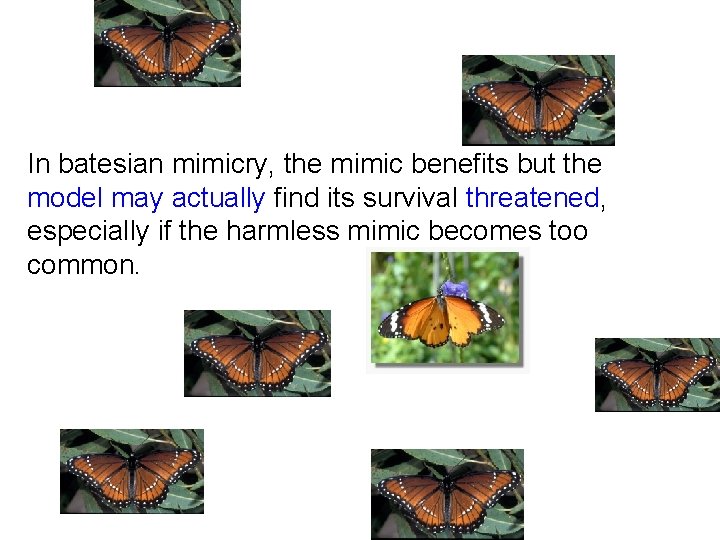
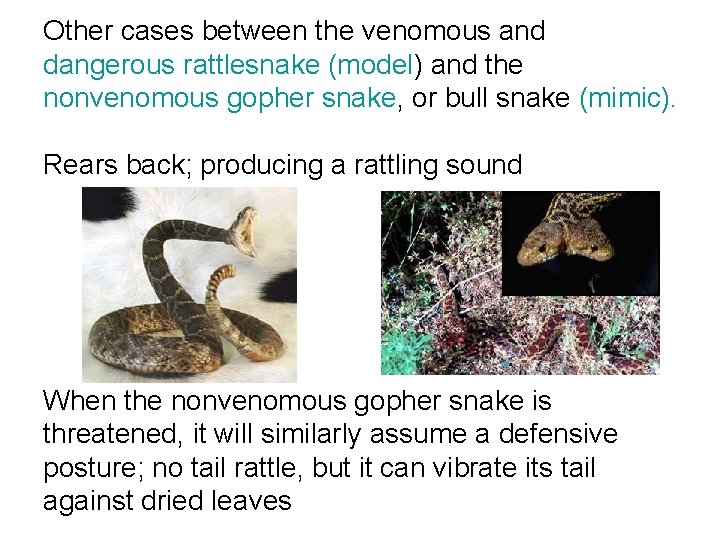
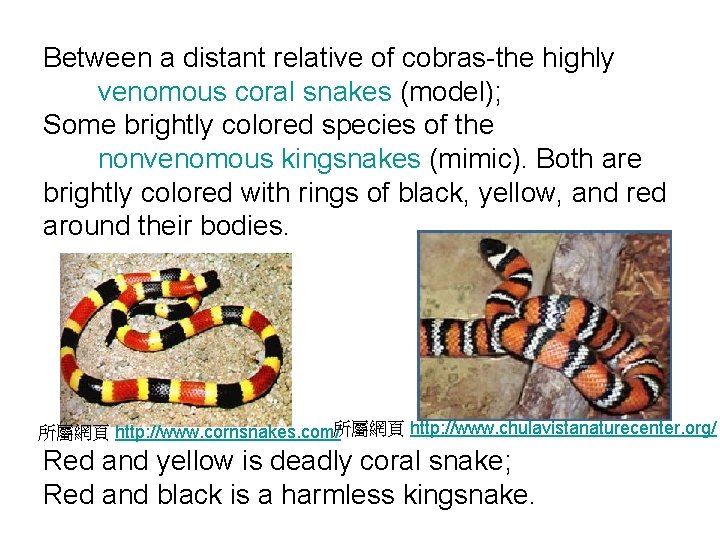
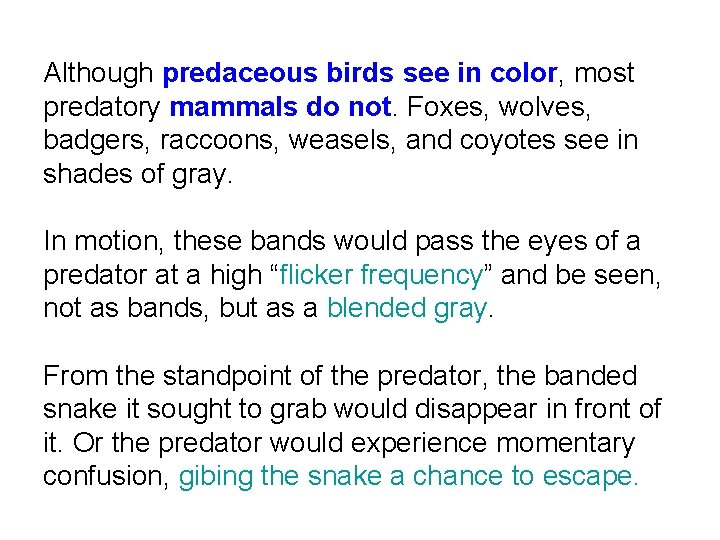
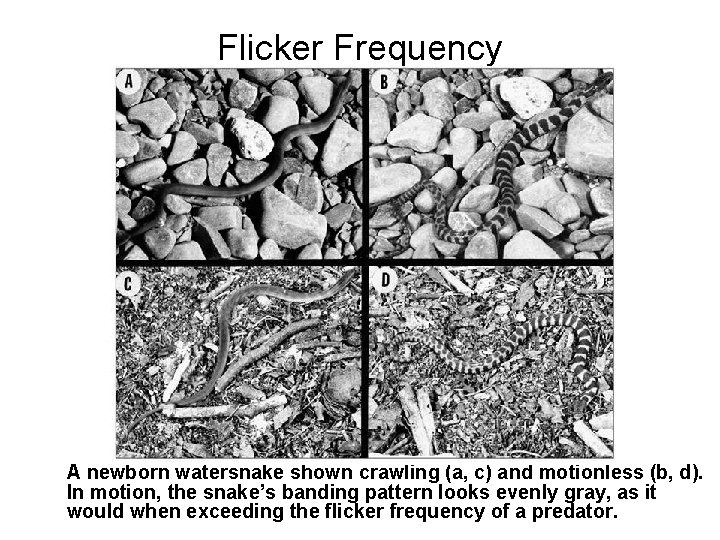
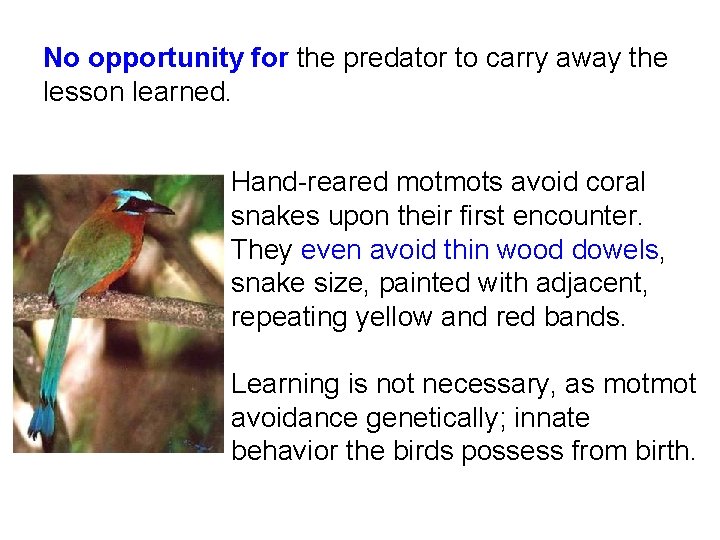
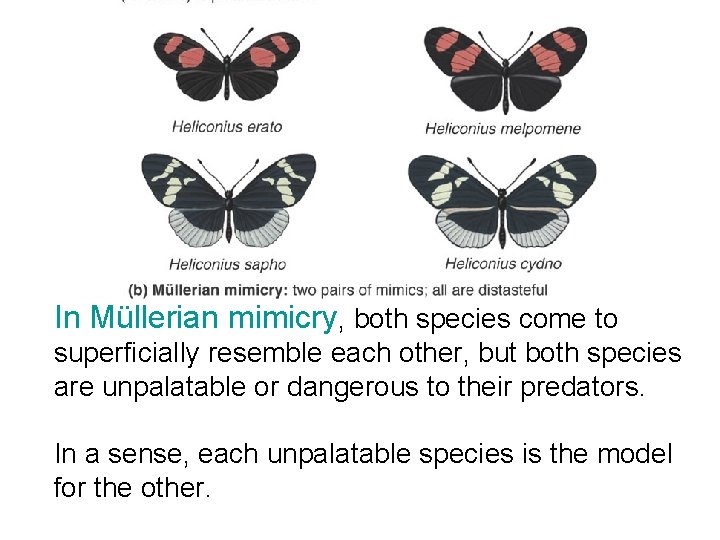
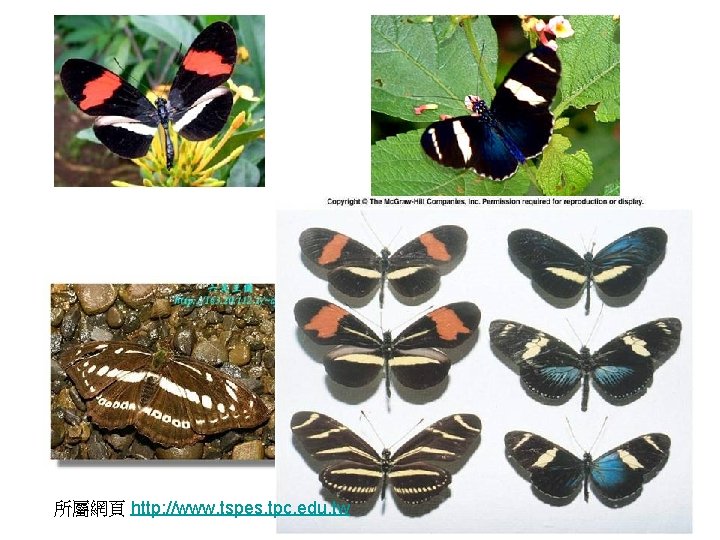
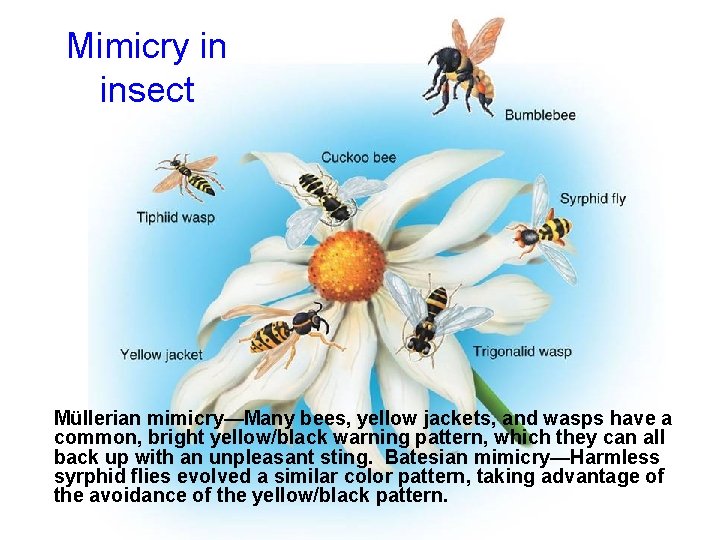
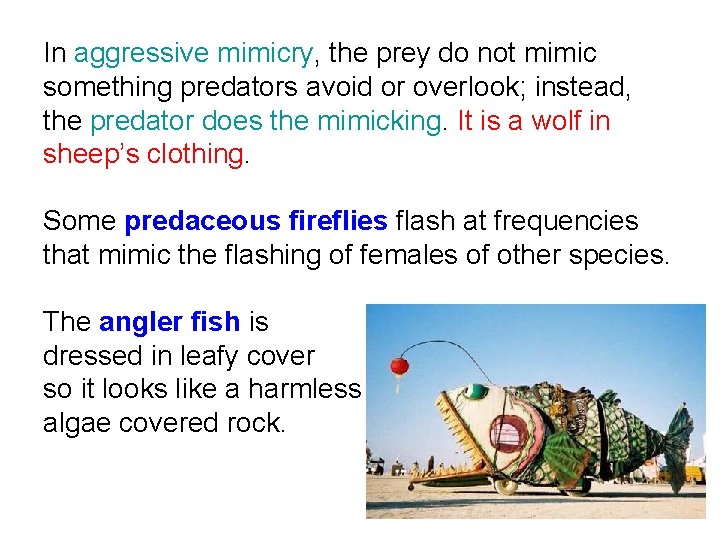
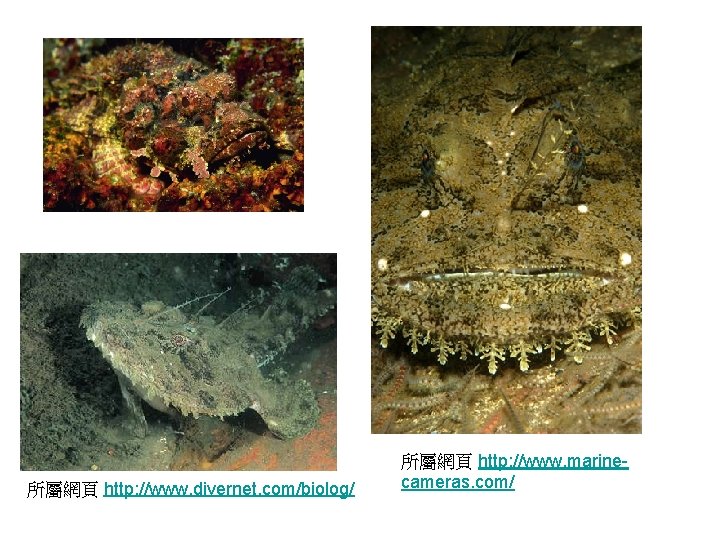
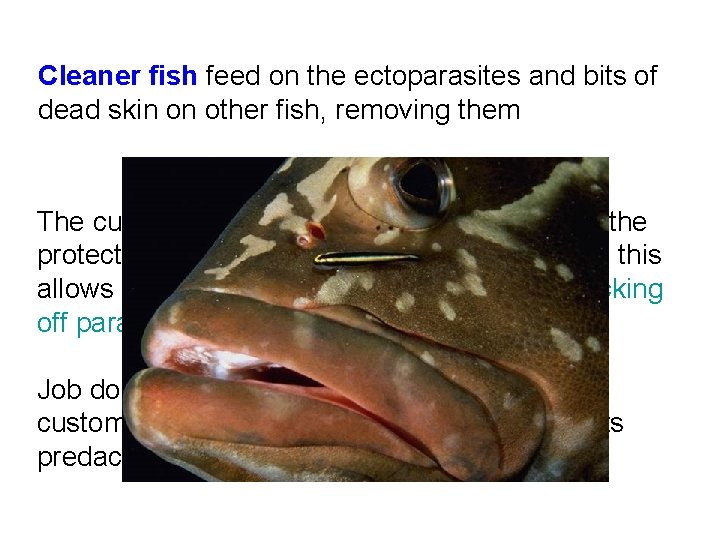
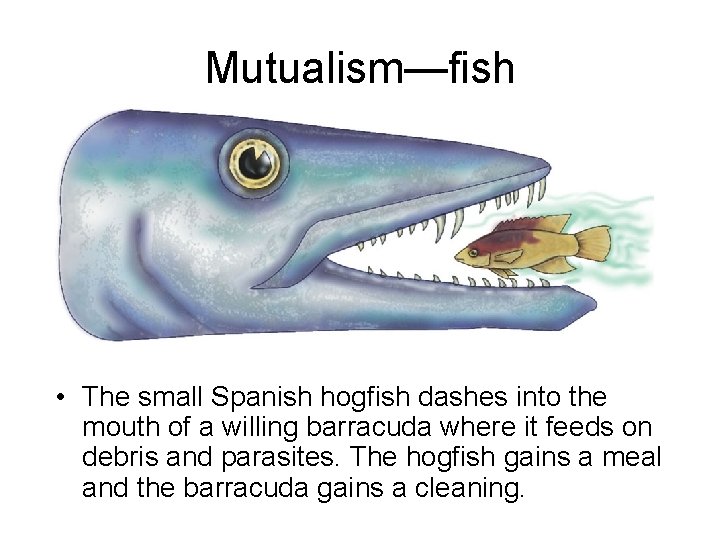
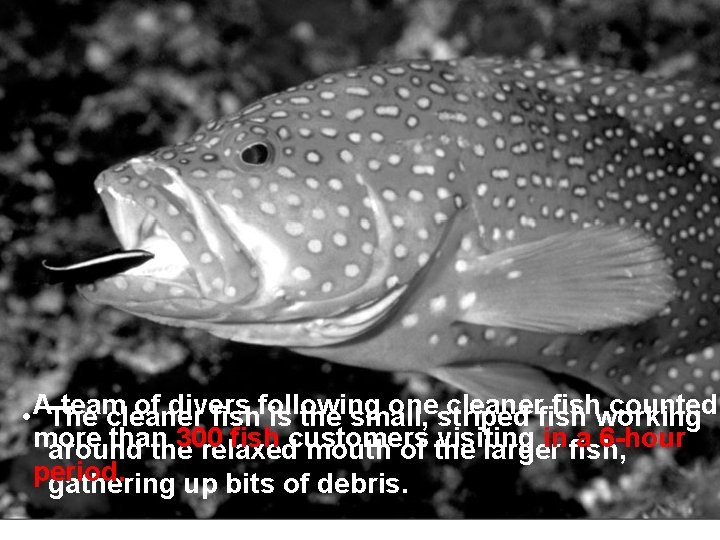
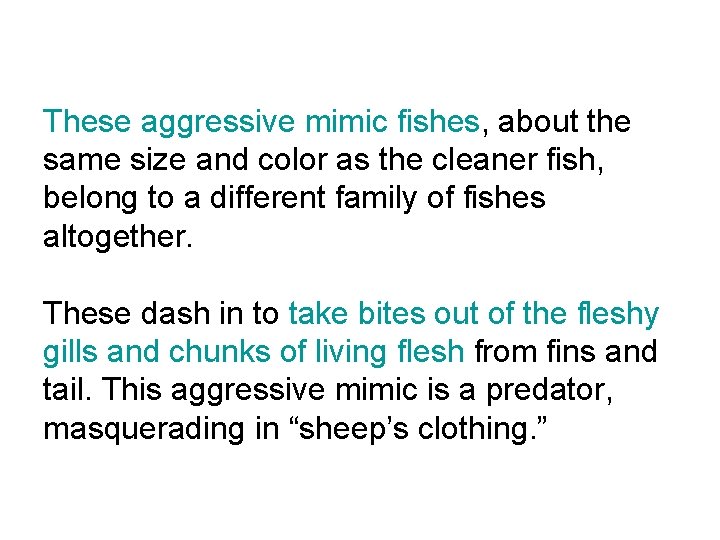
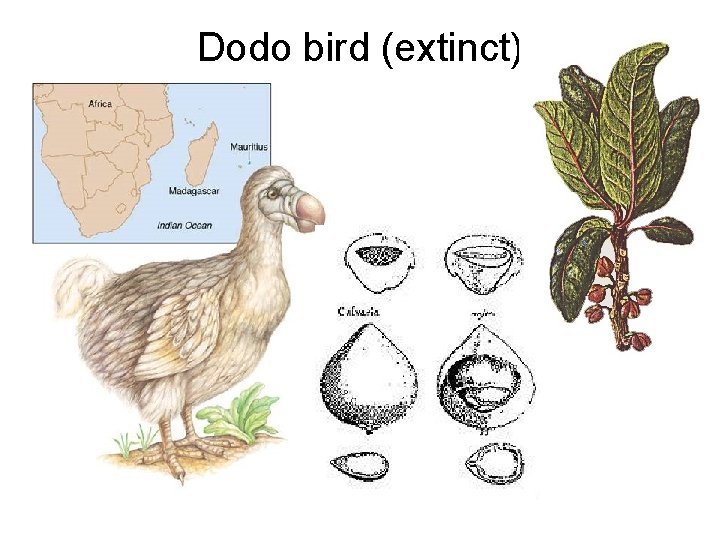
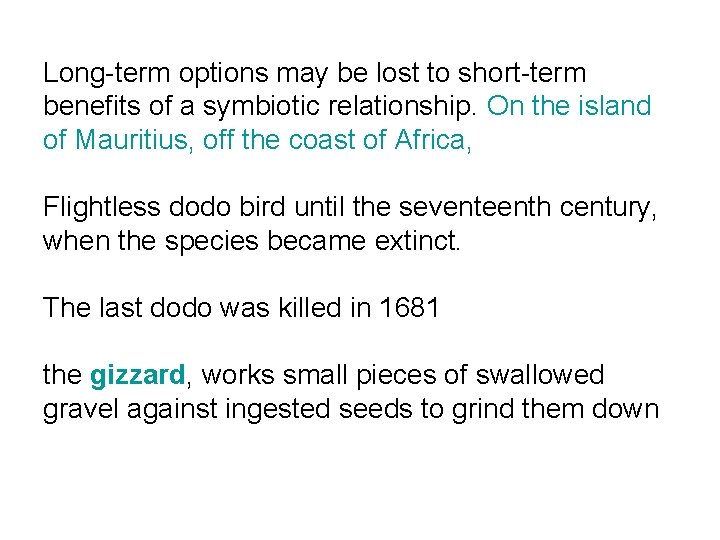
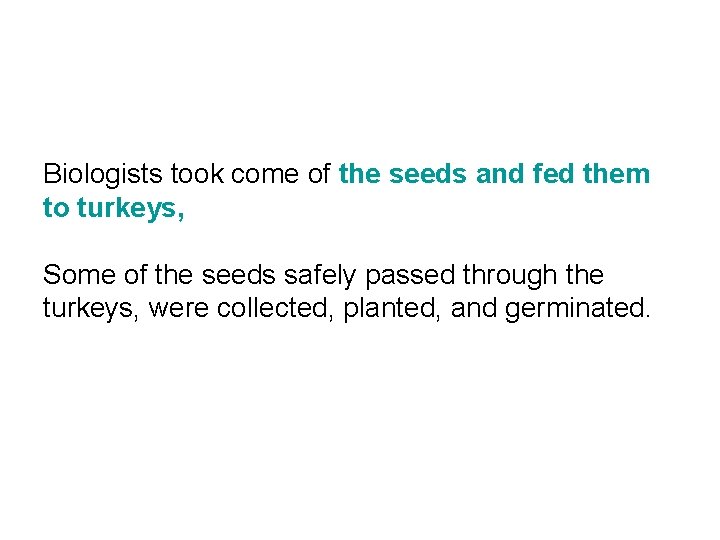
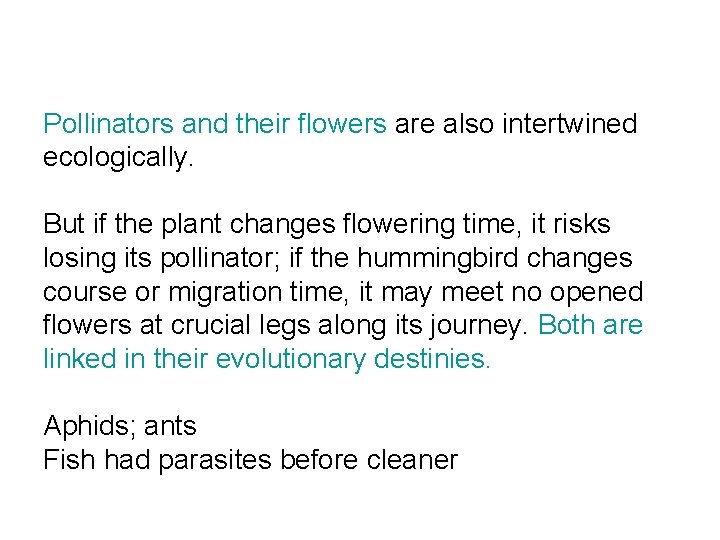
- Slides: 73

Chapter 10 Co-Evolution Co-evolution involves the joint evolution of two or more species as a consequence of their ecological interaction. Each species is partially dependent upon or threatened by the other, thereby producing reciprocal selective pressures.

Symbiosis means living together, an ecological coupling of two or more species in a coevolutionary relationship. If both partners benefit, the relationship is mutualism. If one benefits the other is at least not harmed, is commensalism. When one species loses and the other gains; predation (predator and prey), parasitism (parasite and host), herbivory (herbivore and plant).

Spines; cactus, with projecting thorns

Chemical warfare Some herbivores have tough tongues and steely mouths Small insect herbivores evade the spines by simply navigating around them to Plants under such attack often produce chemicals that are unpleasant in taste or even toxic in effect; secondary chemical compounds. Their central function is to provide the plant with chemical weapons to frustrate natural enemies.

Nicotine in tobacco plants; against herbivorous insects disrupting their metabolism and probably carrying a foul taste Seeds of some morning glories include dlysergic acid, close chemical cousin to LSD, with hallucinogenic properties

Members of the mustard family include mustard, radish, horseradish, cabbage, and watercress, all of which contain mustard oil. Some plants, such as milkweeds and dogbane, produce milky sap containing cardiac glycosides, named for their potentially lethal effects on the heart of vertebrates but equally toxic to many insects.


殺不完的昆蟲 Plants have been in chemical conflict with herbivores, insects in particular, for millions of years. When humans, late participants in this chemical warfare against insects, are quickly defeated by insects that evolve resistances to humans – engineered chemical pesticide. Insects have been waging this old battle of chemical warfare against plants for millions of years. 身經百戰的昆蟲


Mutualisms What they do not digest, they excrete as a droplet of water containing undigested sugars, known as “honeydew. ” Some species of ants collect this excreted honeydew, using its sugars as a resource. Directly solicit the aphids to release the drop of honeydew. And in some interactions, the ants may actively protect the aphids from their predators, Aphids benefit from the protection afforded by the attending ants.

Ants and Aphids-Mutualism • These ants tend their “herd” of aphids, which in turn secrete fluids rich in sugars drunk up by the ants.

Ants and Fungus Attini ants, denizens of the New World tropics, culture and then eat the fungus (genus Leucocoprini) in safe, underground “gardens” within their burrows. The fungus is grown on a mixture of excrement fertilizer, from the ants, and fresh plant material gathered aboveground by the ants.

Leaf-cutter ants —mutualism The ants chew up the leaf pieces into even smaller pieces (1 -2 mm), munching them into a pulp, and insert the pulp into the garden plots

所屬網頁 http: //www. dimijianimages. com/

Ants then pluck tufts of the fungus Overall, both ants and fungus benefit. For the ants, it is a sustainable crop. For the fungus, it is care and nurturing. Ants chew up the antifungal defenses of the plant (such as its waxy coating), and the fungus degrades the anti-ant defenses (insecticides) of the plant, such as its secondary chemical compounds

This chummy world of ant farmer and fungus garden invites the invasion of “weeds. ” The weed is a virulent parasitic fungus (genus Escovopsis). In response, ants carry on their bodies a bacterium (genus Streptomyces) that produces antibiotics 所屬網頁 http: //grani. ru/Society/Science/

所屬網頁 http: //www. dimijianimages. com/

Acacia tree (Acacia cornigera) Ants (Pseudomyrmex ferruginea). Along its branches, the acacia provides the ants with small pools of nectar drunk up by the ants and Beltian bodies picked and fed to ant larvae; further, the inflated, hollow thorns of the acacia provide a home in which the ants live. The ants protect the acacia from browsing mammals; The ants also attack herbivorous insects that alight on the acacia. Further, the foraging ants eliminate adjacent, competing plant species by eating their leaves.

Ants and Acacias-Mutualism

The ecologist, Daniel Janzen, removed the ants from their associated acacia trees by clipping off branches that held the colony of ants or by temporarily eliminating the ants with insecticide spray. Quickly became vulnerable to unchallenged attacks by phytophagous insects the acacias were overgrown by competing shrubs and trees. Essentially, the ants provide a standing army for the acacias,

How it evolved Perhaps the first step would be the evolution of thorns by the acacia. Next, the facultative or casual use of these thorns as nest sites by tic association. Defoliates competitor plants The by-product of this attack would be to fend off acacia enemies produced supplementary food

Honeybees and Flowers Gymnosperms produce pollen, packets of sperm, carried usually by the wind to female ovules where fertilization occurs. Instead of wind, flowering plants often employ animal vectors, directed transfer agents, to carry pollen more or less directly from male to female flowers. Butterflies; hummingbirds; honeybees

Honeybees and Flowers The colors and smells both catch the attention of honey bees and, signal the availability of food and ripe pollen. Honeybees have special bristles on their legs”pollen baskets”-which The honeybee gains a resource from the flower; the flower gains a traveling agent to deliver its pollen.

Honeybees and Flowers

Hummingbirds and flowers Hummingbirds feed on insects, but they are outfitted with specialized long beaks and tongues to drink up nectar they are specialized to tap resources supplied by flowers but they also act as pollinators as they move from flower to flower. Hummingbirds may visit one site only during a short block of time.

Hummingbird feeding on a flower

Angiosperms, which cater to hummingbirds as their pollinator, bloom during the spring as hummingbirds pass through on their way to northern breeding territories. Many flowers; tubular and narrow at their base, Tends to prevent roving insects from pirating nectar saves it for hummingbirds with long beaks and tongues

Practical and Functional Biologists placed around the grounds small, clear dishes of sugar water on colored backgrounds; attracts butterfly clearly preferred two particular colors, yellow and purple. These turned out to be the flower colors they preferentially visited as well. Our eyes do not see in the ultraviolet range of light, but the eyes of some insects do

• Note the distinguishing nectar guides, the spots near the center of the flower.

Mutualism—fish • The small Spanish hogfish dashes into the mouth of a willing barracuda where it feeds on debris and parasites. The hogfish gains a meal and the barracuda gains a cleaning.

Mutualism—birds and crocodiles • This African crocodile relaxes and holds its mouth open. This signals Egyptian Plovers to enter and safely feed on fouling parasites and debris. The crocodiles gain a cleaning, and the plovers a meal.

Mutualism—oxpecker • This red-billed oxpecker forages for parasites on the backs of African ungulates. Here the oxpecker is working around the neck of domestic cattle. Parasites tend to collect along the back of the neck where scratching cannot dislodge them. The oxpecker gains a meal, and its customers get rid of parasites.

Commensalism “looking-glass” orchids, are visited not by bees, but by wasps. At first, that puzzled biologists. Wasps are usually scavengers and predators. For wasps, pollen is not a resource to be harvested. Looking-glass orchids do not even produce nectar, yet wasps visit, and hence the puzzle.

Not to find food but to satisfy the prurient interests of male wasps- for sex. It is not known for how long or for how many times a male wasp continues his unrequited quest, but looking-glass orchids are a very successful group of plants.

The skunk cabbage is named for the unpleasant odor, human senses. Humans often describe this plant as smelling like rotting meat or dung. But to the sensitivities of many insects, these welcome odors signal useful resources. Flies and scavenging beetles seek out decaying meat or dung, respectively, where they lay their eggs.

When the flower ripens, it warms, up to 40℃, volatilizing the chemicals within that drift out into the air to attract the insects. 所屬網頁 http: //www. kta. kh. edu. tw/ 所屬網頁 http: //www. beals. us/pinebush

Overview: commensalism. Certainly, the looking-glass orchid benefits from the amorous travels of the male wasp, but the wasp receives no biological return. Similarly, the skunk cabbage benefits from insect pollinators, but the insects fond no beneficial resource. Some biologists argue that these are not examples of commensalism (benefit/no harm), but of behavioral parasitism (benefit/harm)-only the plants gain in the interaction, the insects lose.

Initially, ancestors to skunk cabbages may have depended on all available insect pollinators. But skunk cabbages are physiologically adapted for life in wet and soggy places, dim light, and shade. The skunk cabbage only needs to a built- in attraction to some flies and beetles, in which it is a sensory delight already in place as part of their own reproductive quest.

Camouflage Sometimes it pays to hide. Organisms that conceal themselves from enemies may do so with camouflage or cryptic coloration and shape. Rounded “stone plants” live in arid and open habitat, they are the shape of inedible stones, and silver skinned Many animals, like plants, looks like an uninteresting dry stem; only falls to the ground and continues the deception, remaining motionless

Camouflage—inedible The resemblance of these insects to inedible plant parts affords them some protection from prowling insect-eating predators, such as birds.

Camouflage—coloration and shape • This dwarf seahorse (center) is camouflaged within the branches of this colonial sea fan. Reef, Solomon Islands.

Camouflage—arctic hare • This hare depends upon its white color to blend into the snowy background. When discovered, it turns to speed to make an escape from predators.

Harbor seal pup • The white coat of the harbor seal pup affords some camouflage with the ice and snow upon which it spends much of its early life when it is especially vulnerable to predators.

Camouflage—predator • This stonefish is encrusted with various creatures of the coral reef, camouflaging it to unsuspecting prey that cruise by.

Sometimes it pays to advertise. Coloration that publicizes an organism’s presence is warning coloration or aposematic coloration. Arrow frogs of tropical South America toxic skin the toxins must be ingested or enter the bloodstream, to be dangerous The cooking denatures the frog toxins. 所屬網頁 http: //www. oceanproaquatics. com/

Sometimes animals do both-hide and advertise. The screech owl, tucks itself up against the tree, closes its headlight –like eyes; owl puffs up, spreads its wings, displays its bright eyes, and tries to look formidable. Venomous rattlesnakes remain silent, not move or rattle its tail. It turns into a flurry of display; warning behavior.

Sometimes it pays to startle. Eye spots occur in moths, on caterpillars, and even on the rumps of frogs. Namely, to startle the predator long enough to make an escape

Startle Response, Eyespots on Butterfly

MIMICRY Sometimes it pays to impersonate. The superficial resemblance between two or more organisms that results from a co-evolutionary relationship is termed mimicry. The term mimicry is usually applied in a strict sense to two general categories of mimicry: Batesian mimicry and Müllerian mimicry, each named for the first person to publicly recognize the type.

Mimicry II • a) Batesian mimicry between toxic monarch (model) and harmless viceroy (mimic), left and right, respectively. • b) An example of Müllerian mimicry, where both ecologically sympatric pairs are distasteful, and both have warning coloration.

In batesian mimicry, one species is dangerous or distasteful and can back up its boastful warning coloration with unpleasant consequences for woukld-be predators. This species is the model. The other look-alike species is the mimic. The mimic is brightly colored and shaped like the dangerous model, 所屬網頁 http: //www. twofrog. com/monarch

The monarch butterfly contains sequestered in its tissues noxious chemicals (cardiac glycosides). If eaten by the bird, these chemicals are released, causing nausea and vomiting. The unpalatable chemicals are picked up during their larval stage; Safely sequestered in concentrated fat bodies http: //freebsd. tspes. tpc. edu. tw/ Raised monarch caterpillars on milkweed plants; Raised M. caterpillars on plants without toxins

Blue Jay Learning Aversion to Distasteful Monarch (a) This hand-reared blue jay, having never eaten a monarch, rips off the wings and gobbles down the body. (b) The toxins quickly make the blue jay sick, and it spits up the monarch. Thereafter, even if presented a monarch lacking such toxins, the blue jay refuses it.

Evolution of toxin in the tissues of milkweed plants. 摩蘿科馬利筋 Monarch evolves a tolerance for the milkweed toxins Adult acquires toxins noxious to its predators Evolution of warning coloration The closer in appearance of viceroy (mimic) to monarch (model), the more the viceroy benefits from predator avoidance.

In batesian mimicry, the mimic benefits but the model may actually find its survival threatened, especially if the harmless mimic becomes too common.

Other cases between the venomous and dangerous rattlesnake (model) and the nonvenomous gopher snake, or bull snake (mimic). Rears back; producing a rattling sound When the nonvenomous gopher snake is threatened, it will similarly assume a defensive posture; no tail rattle, but it can vibrate its tail against dried leaves

Between a distant relative of cobras-the highly venomous coral snakes (model); Some brightly colored species of the nonvenomous kingsnakes (mimic). Both are brightly colored with rings of black, yellow, and red around their bodies. 所屬網頁 http: //www. cornsnakes. com/所屬網頁 http: //www. chulavistanaturecenter. org/ Red and yellow is deadly coral snake; Red and black is a harmless kingsnake.

Although predaceous birds see in color, most predatory mammals do not. Foxes, wolves, badgers, raccoons, weasels, and coyotes see in shades of gray. In motion, these bands would pass the eyes of a predator at a high “flicker frequency” and be seen, not as bands, but as a blended gray. From the standpoint of the predator, the banded snake it sought to grab would disappear in front of it. Or the predator would experience momentary confusion, gibing the snake a chance to escape.

Flicker Frequency A newborn watersnake shown crawling (a, c) and motionless (b, d). In motion, the snake’s banding pattern looks evenly gray, as it would when exceeding the flicker frequency of a predator.

No opportunity for the predator to carry away the lesson learned. Hand-reared motmots avoid coral snakes upon their first encounter. They even avoid thin wood dowels, snake size, painted with adjacent, repeating yellow and red bands. Learning is not necessary, as motmot avoidance genetically; innate behavior the birds possess from birth.

In Müllerian mimicry, both species come to superficially resemble each other, but both species are unpalatable or dangerous to their predators. In a sense, each unpalatable species is the model for the other.

所屬網頁 http: //www. tspes. tpc. edu. tw

Mimicry in insect Müllerian mimicry—Many bees, yellow jackets, and wasps have a common, bright yellow/black warning pattern, which they can all back up with an unpleasant sting. Batesian mimicry—Harmless syrphid flies evolved a similar color pattern, taking advantage of the avoidance of the yellow/black pattern.

In aggressive mimicry, the prey do not mimic something predators avoid or overlook; instead, the predator does the mimicking. It is a wolf in sheep’s clothing. Some predaceous fireflies flash at frequencies that mimic the flashing of females of other species. The angler fish is dressed in leafy cover so it looks like a harmless algae covered rock.

所屬網頁 http: //www. divernet. com/biolog/ 所屬網頁 http: //www. marinecameras. com/

Cleaner fish feed on the ectoparasites and bits of dead skin on other fish, removing them The customer relaxes, it opens its operculum, the protective bony cover the fleshy gills, and this allows the cleaner fish to dart in and about, picking off parasites Job done, the cleaner fish dashes off to other customers, and the spiffed–up fish returns to its predaceous ways in the reef.

Mutualism—fish • The small Spanish hogfish dashes into the mouth of a willing barracuda where it feeds on debris and parasites. The hogfish gains a meal and the barracuda gains a cleaning.

team of divers onestriped cleanerfishworking counted • AThe cleaner fishfollowing is the small, more than 300 fish customers visiting in fish, a 6 -hour around the relaxed mouth of the larger period. gathering up bits of debris.

These aggressive mimic fishes, about the same size and color as the cleaner fish, belong to a different family of fishes altogether. These dash in to take bites out of the fleshy gills and chunks of living flesh from fins and tail. This aggressive mimic is a predator, masquerading in “sheep’s clothing. ”

Dodo bird (extinct)

Long-term options may be lost to short-term benefits of a symbiotic relationship. On the island of Mauritius, off the coast of Africa, Flightless dodo bird until the seventeenth century, when the species became extinct. The last dodo was killed in 1681 the gizzard, works small pieces of swallowed gravel against ingested seeds to grind them down

Biologists took come of the seeds and fed them to turkeys, Some of the seeds safely passed through the turkeys, were collected, planted, and germinated.

Pollinators and their flowers are also intertwined ecologically. But if the plant changes flowering time, it risks losing its pollinator; if the hummingbird changes course or migration time, it may meet no opened flowers at crucial legs along its journey. Both are linked in their evolutionary destinies. Aphids; ants Fish had parasites before cleaner
 Deerus deafus
Deerus deafus Examples of coevolution
Examples of coevolution Example of coevolution
Example of coevolution Importance of coevolution
Importance of coevolution Divergent convergent coevolution
Divergent convergent coevolution Example of coevolution
Example of coevolution Coevolution
Coevolution Sense and response logistics
Sense and response logistics Coevolution
Coevolution Coévolution
Coévolution Morgan sphinx moth
Morgan sphinx moth Tree of life
Tree of life Coevolution
Coevolution Spool joint in lambs
Spool joint in lambs Hyaline cartilage between vertebrae
Hyaline cartilage between vertebrae Differentiate the different ways of making permanent joints
Differentiate the different ways of making permanent joints Memorandum of joint venture
Memorandum of joint venture Lamb carcass grading
Lamb carcass grading Condyloid joint
Condyloid joint Hình ảnh bộ gõ cơ thể búng tay
Hình ảnh bộ gõ cơ thể búng tay Lp html
Lp html Bổ thể
Bổ thể Tỉ lệ cơ thể trẻ em
Tỉ lệ cơ thể trẻ em Gấu đi như thế nào
Gấu đi như thế nào Tư thế worm breton là gì
Tư thế worm breton là gì Alleluia hat len nguoi oi
Alleluia hat len nguoi oi Các môn thể thao bắt đầu bằng tiếng đua
Các môn thể thao bắt đầu bằng tiếng đua Thế nào là hệ số cao nhất
Thế nào là hệ số cao nhất Các châu lục và đại dương trên thế giới
Các châu lục và đại dương trên thế giới Công thức tính thế năng
Công thức tính thế năng Trời xanh đây là của chúng ta thể thơ
Trời xanh đây là của chúng ta thể thơ Mật thư anh em như thể tay chân
Mật thư anh em như thể tay chân Làm thế nào để 102-1=99
Làm thế nào để 102-1=99 Phản ứng thế ankan
Phản ứng thế ankan Các châu lục và đại dương trên thế giới
Các châu lục và đại dương trên thế giới Thơ thất ngôn tứ tuyệt đường luật
Thơ thất ngôn tứ tuyệt đường luật Quá trình desamine hóa có thể tạo ra
Quá trình desamine hóa có thể tạo ra Một số thể thơ truyền thống
Một số thể thơ truyền thống Cái miệng nó xinh thế
Cái miệng nó xinh thế Vẽ hình chiếu vuông góc của vật thể sau
Vẽ hình chiếu vuông góc của vật thể sau Thế nào là sự mỏi cơ
Thế nào là sự mỏi cơ đặc điểm cơ thể của người tối cổ
đặc điểm cơ thể của người tối cổ Thế nào là giọng cùng tên?
Thế nào là giọng cùng tên? Vẽ hình chiếu đứng bằng cạnh của vật thể
Vẽ hình chiếu đứng bằng cạnh của vật thể Fecboak
Fecboak Thẻ vin
Thẻ vin đại từ thay thế
đại từ thay thế điện thế nghỉ
điện thế nghỉ Tư thế ngồi viết
Tư thế ngồi viết Diễn thế sinh thái là
Diễn thế sinh thái là Dạng đột biến một nhiễm là
Dạng đột biến một nhiễm là Số.nguyên tố
Số.nguyên tố Tư thế ngồi viết
Tư thế ngồi viết Lời thề hippocrates
Lời thề hippocrates Thiếu nhi thế giới liên hoan
Thiếu nhi thế giới liên hoan ưu thế lai là gì
ưu thế lai là gì Hươu thường đẻ mỗi lứa mấy con
Hươu thường đẻ mỗi lứa mấy con Khi nào hổ mẹ dạy hổ con săn mồi
Khi nào hổ mẹ dạy hổ con săn mồi Sơ đồ cơ thể người
Sơ đồ cơ thể người Từ ngữ thể hiện lòng nhân hậu
Từ ngữ thể hiện lòng nhân hậu Thế nào là mạng điện lắp đặt kiểu nổi
Thế nào là mạng điện lắp đặt kiểu nổi Chapter 16 evolution of populations vocabulary review
Chapter 16 evolution of populations vocabulary review Chapter 17 evolution of populations answer key
Chapter 17 evolution of populations answer key Chapter 15 darwin's theory of evolution section 15-1
Chapter 15 darwin's theory of evolution section 15-1 Chapter 7 the evolution of living things answers
Chapter 7 the evolution of living things answers 5 evolution and community ecology
5 evolution and community ecology Chapter 23: the evolution of populations
Chapter 23: the evolution of populations Chapter 21 section 1 plant evolution and adaptations
Chapter 21 section 1 plant evolution and adaptations Chapter 18 the evolution of invertebrate diversity
Chapter 18 the evolution of invertebrate diversity Chapter 18 genomes and their evolution
Chapter 18 genomes and their evolution Chapter 17 darwins theory of evolution
Chapter 17 darwins theory of evolution Chapter 16 section 1 primates
Chapter 16 section 1 primates Chapter 16 evolution of populations
Chapter 16 evolution of populations Chapter 15 darwin's theory of evolution section 15-1
Chapter 15 darwin's theory of evolution section 15-1
